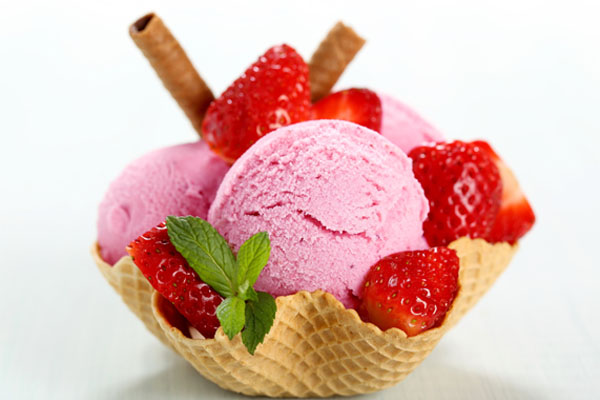The Blossoming Indian Ice Cream Sector: Recent Trends and Growth

The ice cream market in India size reached INR 194.1 Billion in 2022. Looking forward, IMARC Group expects the market to reach INR 508.4 Billion by 2028, exhibiting a growth rate (CAGR) of 17.5% during 2023-2028. The expanding dairy industry and the changing dietary patterns of consumers are primarily driving the India ice cream market. Additionally, the inflating disposable income levels, the widespread adoption of online food delivery models, and the growing investments in promotional campaigns, marketing strategies, celebrity endorsements, etc., are further catalyzing the market growth. Besides this, the increasing investments in product innovations, such as the development of preservative-free, dairy-free, and genetically modified organism (GMO)-free ice creams, are acting as significant growth-inducing factors. Moreover, numerous technological advancements in the production process, the rising popularity of exotic ice cream flavors, and their easy availability via online and offline organized retail channels are augmenting the market growth across the country. Apart from this, strategic collaborations between leading manufacturers and international ice cream brands are also bolstering the market growth. Furthermore, continuous improvements in cold chain infrastructures, including procurement of trained operational and servicing personnel, the introduction of temperature-controlled storage spaces, application of efficient management procedures, etc., are anticipated to fuel the India ice cream market over the forecasted period.
Introduction:
India, with its diverse culinary traditions and ever-evolving tastes, has witnessed remarkable growth in the ice cream sector. Ice cream, once considered a luxury, has become a mainstream indulgence for people of all ages and backgrounds. This article explores the recent trends and growth in the Indian ice cream sector, highlighting key factors that have contributed to its success.
Changing Consumer Preferences:
In recent years, Indian consumers have become more health-conscious and open to experimenting with flavors and textures. Traditional flavors like vanilla, chocolate, and strawberry continue to dominate, but there has been a surge in demand for innovative and exotic flavors such as mango, kulfi, saffron, and even fusion flavors like paan (betel leaf) and masala chai.
Additionally, there is a growing demand for healthier alternatives, leading to an increase in sugar-free, low-fat, and dairy-free ice creams. Manufacturers are responding to these changing preferences by introducing innovative products and expanding their product portfolios.
Growing Urbanization and Rising Disposable Income:
The rapid urbanization in India has significantly contributed to the growth of the ice cream sector. Urban dwellers, with higher disposable incomes and busy lifestyles, are more likely to indulge in frozen treats. The expansion of modern retail formats, such as supermarkets and hypermarkets, has made ice cream easily accessible to consumers across various socio-economic backgrounds. Furthermore, the rise in the number of dual-income households and the influence of western culture have created a culture of impulse buying, further fueling the growth of the ice cream market.
Expansion of Organized Retail:
The emergence of organized retail in India has played a pivotal role in the growth of the ice cream sector. Major players in the industry have leveraged the opportunities presented by organized retail by strengthening their distribution networks and expanding their presence in urban and semi-urban areas. The establishment of dedicated ice cream parlors and kiosks has provided consumers with an enhanced experience, showcasing a wide variety of flavors and options. These outlets also serve as platforms for introducing new flavors and promoting premium ice cream products.
Innovations and Product Diversification:
In order to stay competitive and meet the evolving demands of consumers, ice cream manufacturers have been focusing on product innovations and diversification. This has led to the introduction of unique flavors, textures, and packaging formats. Manufacturers have also experimented with different formulations, such as gelato, frozen yogurt, and sorbet, catering to specific dietary requirements and preferences. They have also expanded their product ranges to include ice cream cakes, rolls, sandwiches, and other novelties, targeting special occasions and festivals.
Regional and Artisanal Ice Cream Brands:
While multinational brands have a strong presence in the Indian ice cream market, there has been a resurgence of regional and artisanal ice cream brands. These brands highlight traditional flavors and local ingredients, appealing to consumers looking for authentic and nostalgic experiences. Artisanal ice cream makers often focus on small-batch production, emphasizing quality over quantity. This trend has gained popularity among discerning consumers who appreciate the craftsmanship and unique flavors offered by these smaller players.
Introduction of Premium and Luxury Segments:
The rising middle-class population in India, coupled with a willingness to spend on premium products, has paved the way for the introduction of premium and luxury ice cream brands. These brands position themselves as offering high-quality ingredients, unique flavors, and a premium experience. Consumers are increasingly willing to pay a premium for artisanal, organic, and gourmet ice creams. This trend has led to the establishment of specialty ice cream boutiques and cafes, attracting discerning customers seeking an elevated ice cream experience.
Conclusion:
The Indian ice cream sector has witnessed remarkable growth in recent years, driven by changing consumer preferences, urbanization, and the expansion of organized retail. The industry has responded to these trends by introducing innovative flavors, healthier options, and premium offerings. While multinational brands continue to dominate the market, the resurgence of regional and artisanal brands demonstrates the Indian consumer’s affinity for unique and authentic experiences. As the sector continues to evolve, manufacturers will need to stay attuned to consumer preferences and continue to innovate to maintain their competitive edge in this thriving market.
Ritesh Verma
Sources are available on request